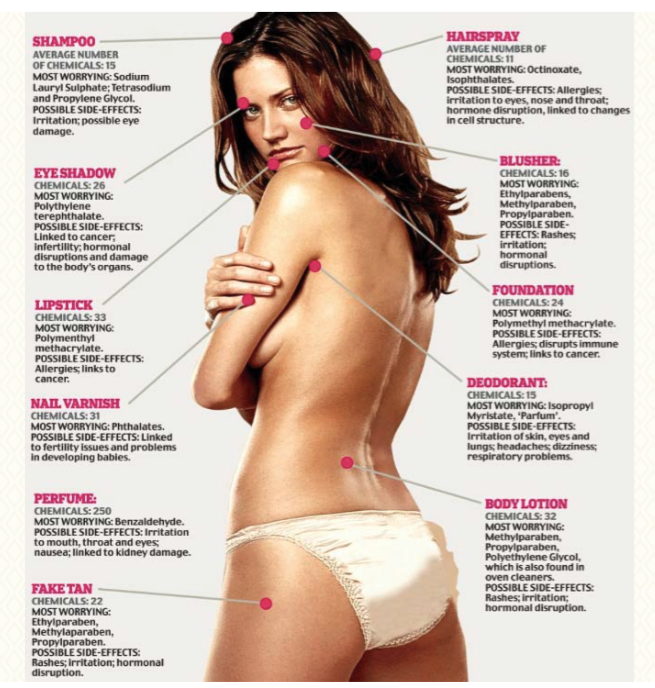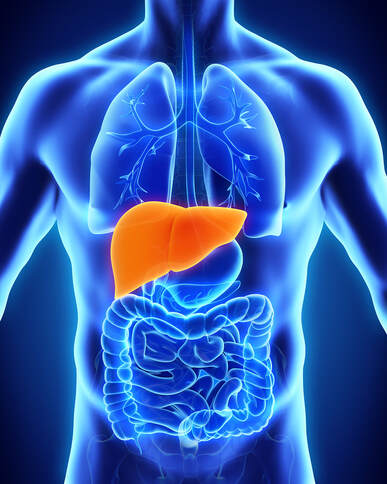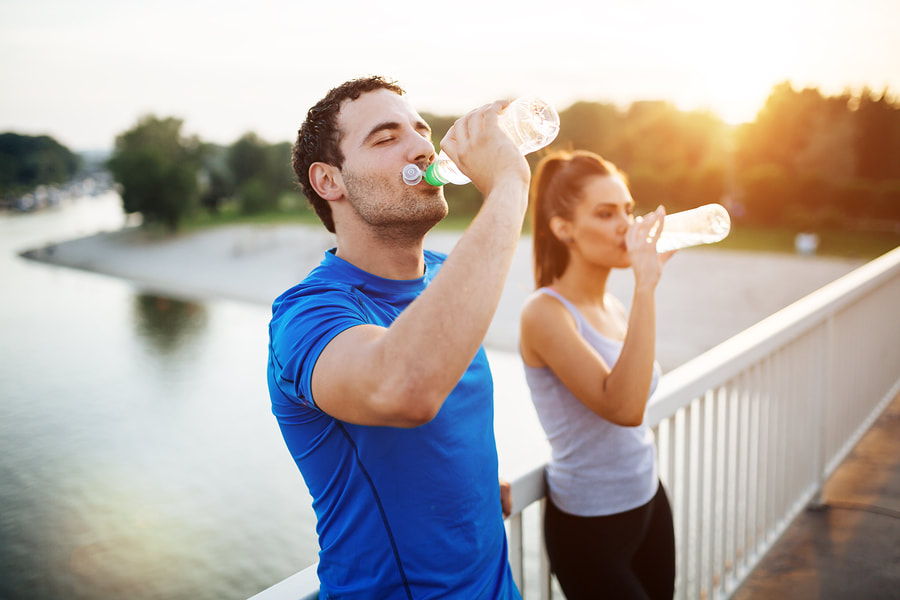|
Cold season - Be ready!
Here is a good tip to prepare your immune system to the pending cocktail of viruses that are lurking our way. The new Coronavirus COVID-19 is added to the list of influenza viruses so it is best to be prepared by strengthening your immune system. The damage caused by viruses is actually generated by our own immune system response, which releases all sorts of pro-inflammatory cytokines, hence if you are the unlucky one to catch one of these nasties, you would benefit from anti-inflammatory and anti-microbial herbs and nutrients. There is a large array of antiviral in nature! As a home remedy: Thyme, clove, cinnamon and oregano are fabulous antimicrobial herbs. If you think that you are coming down with a cold, grate 1 cm piece of ginger, add 2 teaspoons of herbs `in a teapot, add 3-4 cups of boiling water and cover for 15 minutes. Sip at regular intervals such as a cup every 60 minutes. Do not use herbs that have been stored in the pantry for too long (over than 6 months) since they can harbour moulds. As a herbal tea, capsule or tincture: The following herbs have a marked antiviral action Elderberry, elderflowers, andrographis, goldenseal and any berberine containing herb. Those indispensable vitamins and minerals: A (retinyl acetate- not betacarotene), D, C, zinc and magnesium The anti-inflammatory herbs: Ginger and turmeric are top on the list! Have them fresh, grated or in supplement form. Frankincense is a great anti-inflammatory essential oil to use in a diffuser and to massage on your chest if you suffer from pulmonary infection. They may be used along antibiotics and will enhance their action.
0 Comments
How are female hormones made?
Sex hormones are produced by the adrenal glands and ovaries from cholesterol. This means if you are not eating enough cholesterol and beneficial fats your body will not be able to generate sex hormones! Cholesterol has had a bad reputation, and for years it has been incriminated as a culprit in cardiovascular disease. Actually, it is not so much cholesterol itself that is responsible; it is the type of lipoprotein your cholesterol will attach to. The “bad protein” is called LDL for Low Density Lipoprotein. If you have high levels of this protein (above 2 mmol/L) you are at higher risk of developing cardiovascular disease. Why do sex hormones decrease during menopause? Your ovaries are the siege of sex hormone production; oestrogens are produced by the ovarian follicles (eggs) as well as progesterone. You reach menopause when your ovaries stop producing eggs, hence your hormone levels fall gradually and you end up having hot flushes at night, mood disorders and your bone density decreases, because these oestrogens have a protective effect on various organ systems. Here are the foods that you can you eat to promote optimal levels of oestrogens: #1 Linseeds, Sesame seeds, sunflower seeds These little seeds are grains of magic. They contain substances called lignans which are similar action to oestrogens. Studies have found their efficacy not only in increasing the levels of type 2 oestrogens, but also in improving cholesterol levels and oxidative stress. . They also promote a healthy nervous system due to their essential fats. Jackpot in a seed! #2 Eggs Eggs have had a bad reputation for their cholesterol content, but they are exactly what you need to make sex hormones. They also contain antioxidant vitamins A and E and choline, a precious nutrient for healthy liver function. #3 Bone broth Bone broth made in a slow cooker for 2 days contains the amino acids glycine and glutamine which are essential for liver detoxification. If your busy lifestyle does not allow enough time to make bone broth, you can find an organic dehydrated form at www.brothoflife.com.au #4 Cruciferous vegetables Cauliflower, broccoli, bok choi, cabbage, brussel sprouts belong to the same brassicaceae family, and are commonly called cruciferous vegetables. They play an important role in liver detoxification due to a common ingredient, sulphoraphane. #5 Turmeric Similar to ginger, this orange root used in Indian curries has astonishing properties; amongst these, it promotes bile secretion from the liver, turns off anti-inflammatory molecules and promotes the production of type 2 oestrogens. #6 Rosemary This famous herb is not only good for cooking lamb. It actually promotes type 2 oestrogens and has wonderful detoxification properties. You may use it in a herbal tea if your liver is playing up or if you suffer from periodical acne. #7 Bitter herbs Rocket salad, mustard greens, dandelion leaves are classified as bitter herbs due to their taste. They are great for your liver by promoting bile production and supporting your digestive system. A healthy liver means healthy hormones! #8 Legumes and wholegrains They contain substances called lignans and fibre which are necessary for sex hormone balance. Always soak them overnight before cooking to improve their digestibility. #9 Lecithin. This fabulous product is found in soybeans and egg yolks. It has shown to restore liver enzymes. You may find it in granules form at the supermarket health section. A teaspoon or two a day sprinkled on your cereals or in your smoothies is all what you need. Check that the lecithin is from non-GMO soybeans. Your lifestyle is also important. Stress interferes with hormone production in great extent so it is important to find time to relax and break the daily routine through pleasurable activities. Take time to eat in a calm environment and have a non-processed nutritious diet. (see below) Eating enough fibre is necessary for gut health and elimination of unnecessary fats. Half of your plate should consist in vegetables raw and cooked. Exercise plays a big role in balancing hormones and reducing stress levels, so make sure you have an active lifestyle and exercise at least three times a week. Most of all, reduce all sources of refined carbohydrates in your diet – Pastries, cakes, lollies, soft drinks and chocolates, which are high GI foods. High GI (Glycaemic Index) foods promote quick rise of blood sugar, since this type of sugar is easily digested. On a long-term this will promote insulin resistance, which means that the insulin receptors will no longer work to get that sugar out of your blood to your cells and you will end up with PCOS or worse type 2 diabetes! What can you do if you have sugar cravings? It probably means that you are stressed, depressed or malnourished. This is what is commonly advised:
The liver is the organ of detoxification, but it also contributes to hormone manufacture, bile secretion (to emulsify fats), cholesterol production and blood sugar balance. Without adequate liver function you may experience bloating after meals, indigestion (especially after fatty meals), rise in serum cholesterol, and improper absorption of fat soluble vitamins such as A, D, E and K. Suboptimal liver function is responsible for complaints like polycystic ovarian syndrome (PCOS), endometriosis, and acne vulgaris. Here's what you should avoid.:
What is CoQ10?
Coenzyme Q10 (CoQ10), also known as ubiquinone, or Ubiquinol (active and best form) is produced by the body and is used for energy production. In other words, it is a powerful, fat-soluble antioxidant responsible for an important part of your body's natural energy. How does it work? CoQ10 as an antioxidant, fights damaging particles in the body known as free radicals. Free radicals can cause all kinds of cellular damage and interfere with DNA. It is believed that free radicals can contribute to a number of health problems, including heart disease and cancer. Antioxidants, like CoQ10, can neutralize free radicals and may help to prevent some of the damage they cause. The ability of CoQ10 to assist with heart related conditions, may be due to its ability to improve energy production and prevent blood clot formation. How to tell if you might be CoQ10 deficient Deficiency signs and symptoms can include:
Main actions of CoQ10:
An electrolyte replacement drink, powder, effervescent tablet or gel aims to replace the missing electrolytes, nutrients, or minerals that are eliminated through perspiration and muscle metabolism during intense exercise.
This is essential to prevent exercise associated hyponatremia (low blood sodium) or other deficiencies. There are many brands available on the market so no doubt there will be some confusion there! So what to look for:
Mild
Resources Bergeron M. 2007 'Exertional heat cramps: Recovery and return to play.' J Sport Rehabil ; 16:190-196. Sawka M, Burke L, Eichner R, Maughan R, Montain S, Stachenfeld N. 2007 'Exercise and Fluid Replacement.' Position Stand. Med Sci Sports Exerc ; 39:377-390. Schwellnus MP. 2009'Cause of exercise associated muscle cramps (EAMC) — altered neuromuscular control, dehydration or electrolyte depletion?' B J Sports Med ; 43:401-408. Walker, AF, Marakis, G, Christie, S & Byng, M 2003, ‘Mg citrate found more bioavailable than other Mg preparations in a randomised, double-blind study’, Magnesium Research, vol. 16, no. 3, pp. 183-91. |
|
CONTACT
Phone
0401 518 311
Email
Justforhealth@bigpond.com Address 50 Evans Avenue North Mackay QLD 4740 |







